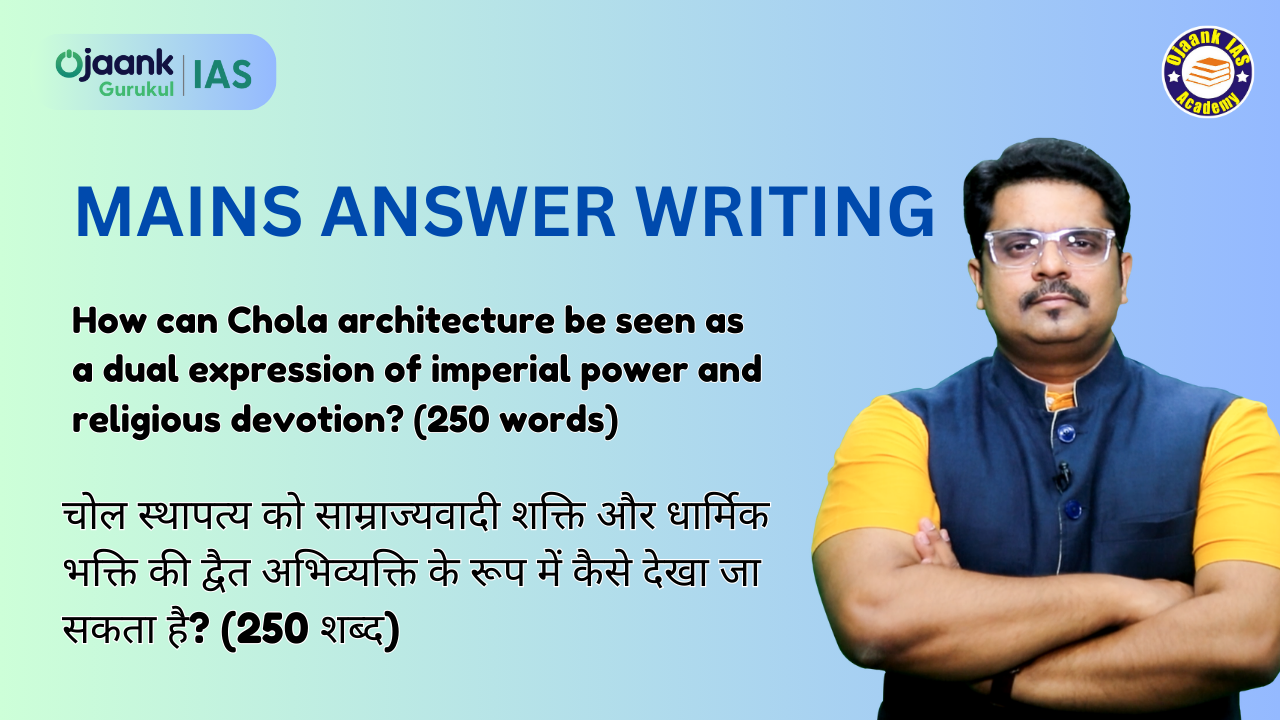How can Chola architecture be seen as a dual expression of imperial power and religious devotion? (250 words)

I. Expression of Royal Authority:
-
Temples as Administrative Centers
-
Used for governance and public administration.
-
Temple walls contained inscriptions about land grants, trade agreements, and tax collection.
-
-
Divine Kingship
-
Kings portrayed themselves as divine representatives.
-
Titles like “Rajarajeshwara” (Lord of Kings) reflected this concept.
-
II. Religious Devotion and Architecture:
-
Temples as Centers of Devotion and Culture
-
Temples were not only places of worship but also hubs of cultural activity.
-
-
Bhakti Movement Influence
-
Sculptures of Nataraja, Shiva, Vishnu, and Goddesses reflected growing religious devotion.
-
These icons played a key role in spreading and shaping the Bhakti movement.
-
III. Role of Emperors in Architecture:
-
Rajaraja Chola I
-
Built the Brihadeeswarar Temple to showcase his imperial strength.
-
-
Rajendra Chola I
-
Constructed Gangaikonda Cholapuram Temple symbolizing his conquests in the north.
-
-
Temple Construction as Royal Duty
-
Temple-building was considered a pious and royal responsibility.
-
IV. Economy and Cultural Patronage:
-
Support to Artisans and Craftsmen
-
Temples provided economic support to local sculptors, artisans, and performers.
-
-
Promotion of Agriculture and Arts
-
Donation inscriptions show temples promoted agriculture, education, and music.
-
V. Conclusion:
-
Chola architecture wove together power and piety, symbolizing the king’s supremacy, the community’s faith, and the enduring strength of culture — all in a single grand expression.
